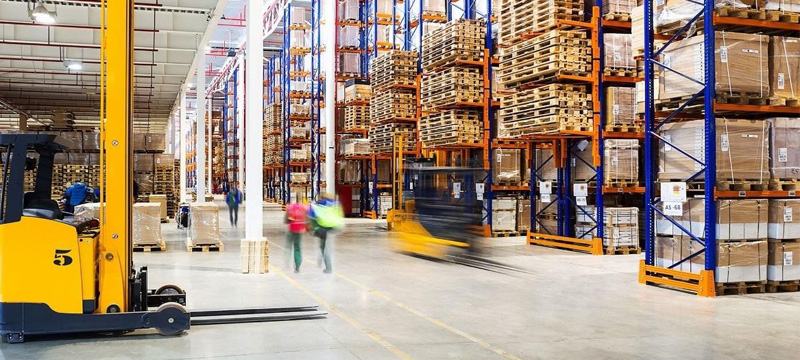Effectively and efficiently running a warehouse is the challenge every warehouse manager faces. In this highly competitive marketplace and consumer-led environment, this task can leave one asking….”where do I start?” As a warehouse managers look to improve operations, here are 5 pillars they must put in place to ensure operational success, following which profits are bound to follow.

Accuracy
The warehouse is a part of a bigger picture: the supply chain. As a result, for a warehouse to be successful, it must fulfill its role of receiving, storing, and shipping goods to the right customer in the right quantities at the right time.
When warehouse managers strive to move goods quicker at the lowest possible cost, often at the expense of accuracy. Usually, the wrong quantity of cargo is shipped, or the wrong product gets packed and processed. Technology such as barcode scanners, warehouse management systems, and RFIDs help managers increase accuracy. However, they are all manually operated and still require time and effort, the very currency which is scarce.
Technology has advanced to an extent where computers are empowered with artificial intelligence, machine learning, and computer vision capabilities. For instance, VIMS (vision-based inventory management system) by TEMPO automatically reads critical product data and matches it with system information, throwing up any discrepancy that may exist between the shop floor and the records.
1. Cost Control
A warehouse is responsible for receiving, storing, and shipping goods to the right customer, in the right quantities, at the right time. These goods also need to be stored and shipped at the right price. For this to happen, warehouse managers need to keep an eye on operating costs.
To store and deliver goods at the right price, warehouse managers must be aware of the cost-intensive items and activities and outline strategies to reduce or control these costs. The most cost-intensive activities in the warehouse include:
Storage Cost
The cost associated with buying or renting a warehouse to store goods is at the top of the list. The cost per square foot per year in the US can range from as low as $2.64 SF/Year and as high as $11.16 SF/Year depending on location.

So, you are paying for every square foot of the space, and any space unused is a sunk cost. When goods are not stored in the right shelves, or the shelf space is not optimized for storage because the visibility gets hampered, then that space is wasted. Many warehouses do not opt for multi-layer storage because their counting, picking, and packing process becomes cumbersome. Computer vision can reach where human eye cannot allowing warehouse managers to stack inventory and optimize the warehouse space.
Labor Cost
Labor-related costs are the second highest operating cost within the warehouse. Labor costs are related to the job role, skill set, and location (city/state). As per the U.S. Bureau of Labor Statistics, the median pay of a warehouse clerk is $28,710 per year/$13.80 per hour. Every time your staff is spending time looking for a product in the isles or is making his rounds counting inventory, you are losing precious dollars. TEMPO’s proprietary system leverages your existing camera system to count and report inventory at no additional or upfront cost.
In addition to storage and labor, two other costs that also figure on top of the list include equipment and utility costs. Investing in IT often means heavy upfront and maintenance costs. However, technologies have advanced to a degree where through tactful innovation, existing infrastructure of the warehouse can be leveraged to facilitate automated operations.
2. Efficiency
Now that we’ve talked about warehouse operating costs, it’s time to discuss warehouse efficiency. Cost inefficiency within a warehouse is probably one of the most difficult to detect and correct in a warehouse operation. At the core of running an efficient warehouse lies technology and processes.
Technology
Warehouse technology provides ways to automate repetitive tasks, improve the management of resources (warehouse space utilization, labor, equipment, etc.), and consistently and reliably collect data to forecast demand, improve processes, and make well-informed decisions.
Processes
This is the point in which warehouse optimization becomes pivotal. Research has repeatedly showed that warehouses that properly define, document, review, and optimize their processes at least once a year are more efficient than their counterparts. Not every cargo requires the same process, and no one process fits all.
An easy way to invest in technology and improve processes is to outsource its implementation and management to experts. While this sounds like a heavy cost burden, consider it as hiring an additional employee and paying him a month salary. His cost will be recovered threefold with all the optimization that follows which will reduce operating expenses and improve productivity.
3. Security
Customers have entrusted your business with their goods and/or your company has invested substantial capital in goods to sell, profit from, and keep the business going. As a result, the security of these goods is paramount to retain customers, gain repeat business, maintain a good reputation in the industry, and run a profitable business.
To lend some perspective on the importance of warehouse security, warehouses are one of the links across the supply chain with the highest theft rate due to the high concentration of goods in a single location. To make matters worse, research suggests that more than half of warehouse theft involves internal resources, directly and indirectly.
A basic warehouse security strategy must include:
- Physical security
- Standard operating procedures
- Personnel security & training
- Visitor identification & registration
- IT security
- Customer evaluation
Investment in a CCTV camera system here will have a two-pronged benefit. The system will increase physical security of your warehouse facility, while its capabilities can also be integrated into TEMPO’s proprietary VIMS software to automate inventory management.
4. Health & Safety
Warehouse health and safety, a topic often neglected by smaller warehouses, is one of the most important aspects of successful warehouse management. Regardless of the size of the warehouse, one thing is certain, accidents will happen.
The most common health and safety hazards in the warehouse include:
- Strains, muscle tears & sprains
- Equipment accidents
- Slips and falls
- Harmful substances
In its, the Occupational Safety and Health Administration (OSHA) from the U.S. Department of Labor concluded that the fatal injury rate for the warehousing industry is higher than the national average for all the industries.
So, increasing the safety within the warehouse is not only the right thing to do, but also the smart thing to do. You will either incur expenses now to prevent an accident or later must defend your business in court. The right and smart thing to do is to be proactive and provide a secure and safe workplace within the warehouse.
If you want to learn about warehouse technology and optimizing warehouse processes, you can follow us on LinkedIn, YouTube, Twitter, or Facebook. If you have other inquiries or suggestions, don’t hesitate to contact us here.


